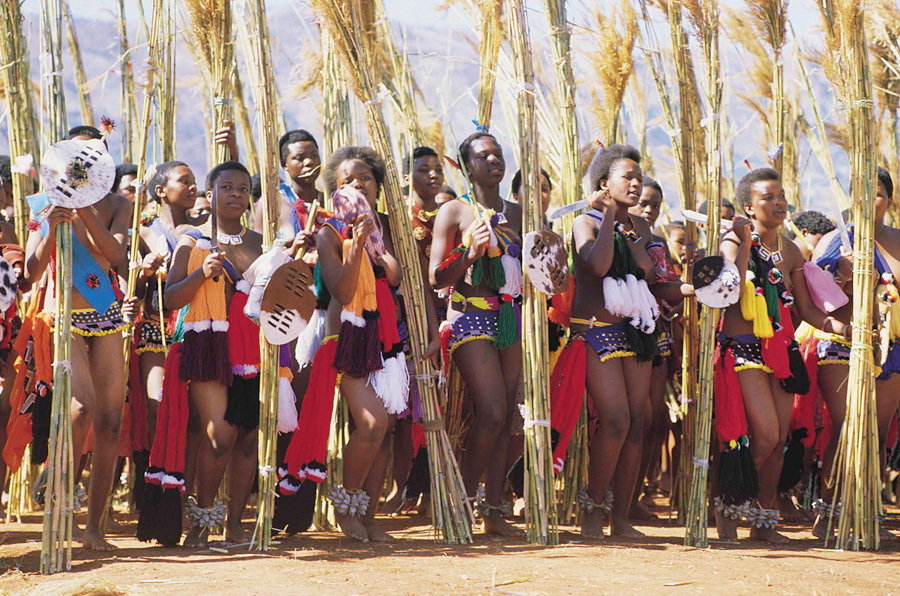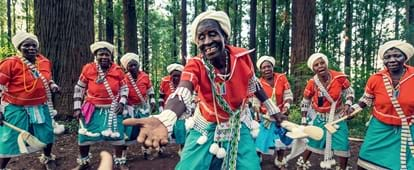How South African Culture Today can Save You Time, Stress, and Money.
How South African Culture Today can Save You Time, Stress, and Money.
Blog Article
South African Culture Today for Beginners
Table of ContentsThe Best Guide To South African Culture Today6 Simple Techniques For South African Culture TodayGetting My South African Culture Today To WorkThe Buzz on South African Culture TodayGetting The South African Culture Today To WorkThe Greatest Guide To South African Culture Today
This adheres to with singing and drum whipping. The new bride and groom then meet the seniors and talk regarding the significance of their union. An issue of significance in Zambian villages is the passing away of loved ones. All participants of the town put money, time and effort with each other for the burial of the deceased.Music and dancing is a really crucial aspect of the Zambian society. The numerous tribal devices have their own dance types; nonetheless, makishi is common amongst all tribes.
Facts About South African Culture Today Revealed
When it comes to music, drums are used one of the most, with a selection of drumming ceremonies. In Zambia, majority of individuals are Christian; Protestant and Roman Catholic. There are tiny teams of Muslims and Hindus, with the remainder following regional indigenous tribal ideas.

South African heritage and culture is profoundly varied, and contains several groups of people who each have their own practices and beliefs. Having such a variety of individuals and cultures is what makes South Africa so special. In truth feeling of the phrase, we are a rainbow nation.
South Africa has about 3 hundred thousand Portuguese individuals living in it. Making it the 7th on the checklist of countries with one of the most Portuguese individuals in it outside of Portugal. Portuguese is not only a society, however it is also a language and a citizenship. Portuguese individuals originate from the country of Portugal in Europe, nevertheless, because of Portugal (like numerous various other nations in Europe) discovering the globe and overcoming various other countries throughout the 15th 20th centuries, South Africa has what we call Portuguese South African's living in it.
South African Culture Today - The Facts
Among the famous features of the topography is a plateau that covers almost 2 thirds of the facility of the nation. The plateau complex rises towards the southeast, where it culminates in the Drakensberg range, part of a cliff that separates the plateau from the seaside areas. The Drakensburg consists of Sparkling wine Castle, the highest top in the nation.
The region north of the Witwatersrand, called the bushveld, slopes downward from eastern to west towards the Limpopo River, which develops the global boundary. The western area of the plateau, the middleveld, likewise comes down in the direction of the west and differs in altitude between the highveld and bushveld. In between the Drakensburg and the eastern and southern shoreline, the land descends to the sea.
Nearer the coast there is a low-lying plain called the eastern lowveld. Southwest of the plateau the nation comes to be progressively extra dry, providing method to the stony desert of the Great Karroo, verged on the east by the lower, better watered plateau of the Little Karroo. Separating the completely dry southerly inside from the sandy littoral of the southerly coast and West Cape is an additional range, the Langeberg.
The 5-Second Trick For South African Culture Today
The nation's racially, ethnically, and politically separated history has created check my site national and subnational signs that still operate as icons of the country, and others signs that are accepted just by particular teams. The monuments to white settler occupation and political dominance, such as the Afrikaner Voortrekker ("pioneer") Monument in Pretoria and the Rhodes Monument recognizing the British colonial realm building contractor and Cape prime preacher Cecil Rhodes, remain sectarian symbols.
The initial contemporary occupants were the San ("bushman") hunter-gatherers and the Khoi ("Hottentot") peoples, that herded animals (South African culture today). The San might have existed for countless years and left proof of their presence in hundreds of ancient cavern paintings ("rock art"). Bantu-speaking clans that were the ancestors of the Nguni (today's amaZulu, amaXhosa, amaSwazi, and vaTsonga individuals) and Tswana-Sotho language groups (today's Batswana and Southern and Northern Basotho) migrated below east Africa as early as the fifteenth century

Both former republics of the Orange Free State and Transvaal (South African Republic) were developed by Afrikaner settlers who beat and dispossessed the Basotho and Batswana. Lesotho would certainly have been forcibly incorporated right into the Orange Free State without the expansion of British protection in 1869. The ultimate marriage of the nation resulted from the South African Battle (18991902) between the British and both Afrikaner republics, which reduced the nation to spoil at the start of the twentieth century.
Afrikaners historically considered themselves the just true South Africans and, while approving complete citizenship to all residents of European descent, rejected that standing to people of shade up until the autonomous transition of 1994. British South Africans preserve a sense of cultural and social connection to Great Britain without deteriorating their identification as South Africans.
Our South African Culture Today Statements
The diversity and fragmentation within ethnic collections and the equilibrium of tensions between those teams throughout the twentieth century avoided interethnic civil dispute. While intergroup stress over sources, entitlements, and political dominance stay, those disputes are as likely to pit Zulu against Zulu as Zulu against Xhosa or African against Afrikaner.
From colonial India, British sellers and managers brought the bent steel decorative roofs and slender lace work pillars that still represent the terraces of homes in the areas and cities throughout the nation. Holy places add an essential architectural aspect even in the smallest towns. In addition to the soaring steeples and timeless stonework of Afrikaans Dutch Reformed churches, Anglican churches, synagogues, mosques, and Hindu temples supply range to the religious building scene.

Butchering and the developing of conventional grain beer are vital in safeguarding the involvement and a good reputation of the ancestors who are considered the guardians of great fortune, prosperity, and wellness. Indian communities preserve their indigenous cooking traditions and apply them on Islamic and Hindu routine and ritualistic occasions. Afrikaners and Coloured individuals collect at weekends and special events at multifamily barbecues called braais, my explanation where neighborhood bonds are reinforced.
Because this was the primary financial venture of both black Africans and white homesteaders, conflict between those teams focused on the belongings of grazing land and animals. In 1867, the biggest ruby deposits worldwide were uncovered at Kimberley in the west central area. The wealth from those areas aided finance the exploitation of the best gold reef on the planet, which was discovered on the Witwatersrand in 1886.
The Ultimate Guide To South African Culture Today
This caused misconceptions and calculated misstatement in the dealings of white inhabitants and federal government authorities with African principals throughout the colonial period (South African culture today). In the facility of African gets, some aspects of common and chiefly "tribal trust" land period were preserved, and even in white backwoods, kinds of public period were still practiced in locations with African communities
After the democratic change of 1994, programs for land restitution, redistribution, and Homepage reform were instituted, but progress has actually been slow. The white minority still manages eighty percent of the land. In the wake of farming land invasions in Zimbabwe, the Department of Land Affairs has pledged to speed land redistribution.
Report this page